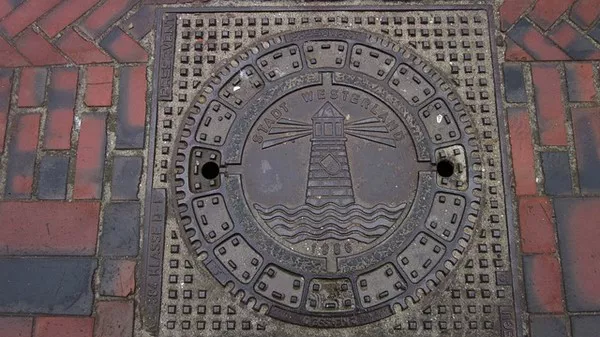Sewage treatment is a critical process that ensures the removal of pollutants and contaminants from wastewater, making it safe for discharge into the environment or reuse. The process of sewage treatment typically involves five distinct stages, each designed to address different aspects of wastewater purification. This article aims to provide a comprehensive overview of these five stages, highlighting their significance in safeguarding public health and the environment.
Stage 1: Preliminary Treatment
The first stage of sewage treatment, known as preliminary treatment, is essential for removing large debris and substances that could clog or damage equipment in subsequent treatment processes. This stage primarily involves two key processes:
Screening: In this process, wastewater is passed through a series of screens or grates with varying mesh sizes. These screens help remove large objects such as sticks, leaves, plastic, and other debris. Screens are typically equipped with rakes or conveyor belts that collect and transport the screened materials for disposal.
Grit Removal: Grit, such as sand, gravel, and small stones, can settle in wastewater and cause abrasion and wear on pumps and other equipment. Grit removal is achieved by slowing down the flow of wastewater in a grit chamber, allowing the heavier particles to settle out. Mechanical equipment then removes the settled grit for proper disposal.
Stage 2: Primary Treatment
After preliminary treatment, the wastewater undergoes primary treatment. This stage aims to remove solid and organic materials suspended in the wastewater. Primary treatment consists of two primary processes:
Sedimentation: In sedimentation tanks, also known as primary clarifiers, the wastewater is allowed to settle for an extended period. During this time, gravity causes the heavier solids to settle to the bottom of the tank, forming a layer of sludge. The clarified water, which rises to the top, is then collected and transferred for further treatment. The collected sludge can be subjected to further processing in later stages.
Skimming: Some of the lighter solids and greases that float on the surface of the wastewater are removed through skimming. Skimmers use mechanical means to scrape off these materials, preventing their entry into the secondary treatment processes.
Stage 3: Secondary Treatment
Secondary treatment is a biological process that focuses on reducing the concentration of dissolved and suspended organic matter in wastewater. This stage is crucial for improving water quality and ensuring that harmful pathogens are eliminated. There are two main types of secondary treatment:
Activated Sludge Process: In this method, wastewater is mixed with a microbial culture, known as activated sludge, which consists of bacteria and microorganisms that feed on organic pollutants. The mixture is aerated to provide the microbes with oxygen, allowing them to break down organic matter. Afterward, the mixture is settled, and excess activated sludge is recycled or removed. The treated water, now significantly cleaner, proceeds to the next stage.
Trickling Filters: Trickling filters involve passing wastewater through a bed of rocks, plastic media, or other suitable materials. Microorganisms attached to the media surface consume organic contaminants as the wastewater trickles through. The treated water collects at the bottom and is then directed for further processing.
Stage 4: Tertiary Treatment
While the primary and secondary treatment stages significantly improve water quality, tertiary treatment is employed when an even higher level of purification is required. Tertiary treatment is particularly essential in areas where the treated water will be used for potable water supply or discharged into sensitive ecosystems. There are several methods used in tertiary treatment:
Filtration: Filtration involves passing the treated water through sand, anthracite coal, or other filtration media to remove fine particles, residual suspended solids, and any remaining microorganisms. Filtration is a crucial step in achieving high water quality standards.
Chemical Coagulation and Flocculation: Chemical coagulants and flocculants are added to the water to help agglomerate and settle remaining fine particles. This process can effectively remove color, turbidity, and dissolved organic matter.
Disinfection: To eliminate any remaining pathogens, such as bacteria and viruses, disinfection is employed. Common disinfection methods include chlorination, ultraviolet (UV) irradiation, and ozonation. Chlorination is widely used due to its effectiveness in killing a broad range of microorganisms.
Stage 5: Disposal or Reuse
The final stage of sewage treatment involves deciding how to dispose of the treated water and the residual sludge. The choice of disposal or reuse depends on local regulations, environmental considerations, and the quality of the treated water. Here are the primary options:
Discharge into Surface Water: Treated water can be released into rivers, lakes, or oceans if it meets established water quality standards and does not harm aquatic ecosystems. Proper permits and monitoring are essential for this option.
Groundwater Recharge: In some areas, treated wastewater is injected into the ground, allowing it to recharge aquifers and supplement local water supplies.
Agricultural and Landscape Irrigation: Treated wastewater, after meeting specific quality standards, can be used for irrigation purposes, reducing the demand for freshwater sources in agriculture and landscaping.
Industrial Reuse: Industries that require large quantities of water for non-potable purposes can use treated wastewater, provided it meets their quality requirements.
Sludge Management: The residual sludge generated during the treatment process can be further processed through digestion, dewatering, and drying. Depending on its characteristics, the sludge can be incinerated, landfilled, or used as a soil conditioner or fertilizer.
Conclusion
Sewage treatment is a complex and vital process that safeguards public health, protects the environment, and conserves precious water resources. Understanding the five stages of sewage treatment – preliminary, primary, secondary, tertiary, and disposal or reuse – is essential for maintaining the quality of our water sources and ensuring a sustainable future. As populations grow and environmental concerns intensify, the need for effective sewage treatment becomes even more pressing. Investing in advanced sewage treatment technologies and adhering to stringent regulatory standards are crucial steps towards a cleaner, healthier, and more sustainable world.

